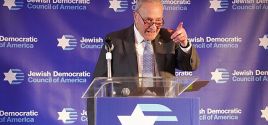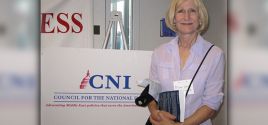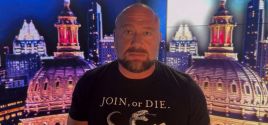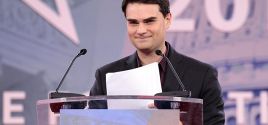Police action on journalists at melee is assailedSome news outlets whose reporters and camera operators were hurt in melee mull legal claims against LAPD.By Anna Gorman and Stuart Silverstein Los Angeles Times May. 06, 2007 |
Popular 
Schumer Moves to Silence Criticism of Israel as Hate Speech With 'Antisemitism Awareness Act'

As Poll Finds Ukrainians Want to End War, U.S. Pushes Zelensky to Bomb Russia and Expand Conscription

FBI Pays Visit to Pro-Palestine Journalist Alison Weir's Home

Federal Judge Orders Hearing Into Questionable 'Auction' of Infowars to The Onion

'More Winning!' Ben Shapiro Celebrates Trump Assembling an Israel First Cabinet
 One day after several reporters and camera operators were injured while covering an altercation at an immigrant rights rally in MacArthur Park, news organizations condemned the Los Angeles Police Department for its use of batons and riot guns against members of the media, and some said they were considering legal options. "We are sorry for what happened to our employees and find it unacceptable that they would be abused in that way when they were doing their job," said Alfredo Richard, spokesman for the Spanish-language network Telemundo, of the anchor and the reporter who were hurt during the evening rally. Other members of the media who were injured included four employees of KVEA-TV Channel 52, a KTTV-TV Channel 11 news reporter who suffered a minor shoulder injury, a camerawoman who has a broken wrist and a reporter for KPCC-FM (89.3) who was bruised by a police baton. "I was dumbfounded," said the KPCC reporter, Patricia Nazario. "I've covered riots. I've covered chaos. I was never hit or struck or humiliated the way the LAPD violated me yesterday." Nazario said she was walking away from riot police when she was hit in the back. Wearing a press pass and holding a microphone, she turned around and told the officer, "Why did you hit me? I'm moving. I'm a reporter," Nazario recalled. Then the officer hit her on the left leg, she said, knocking her to the ground and sending her cellphone flying. "I was shocked, trying to scramble to my feet," she said. "At that point, I just started crying…. I just felt totally vulnerable." Pedro Sevcec was anchoring the evening news for Telemundo when he saw the riot police moving slowly toward the news crews. A few dozen people had gathered to watch Sevcec do his live broadcast. "The next thing I heard was the shotguns," he said. Police knocked over monitors and lights and hit reporters and camera operators with batons, he said. Sevcec said police hit him three times and pointed a riot gun at his face before pushing him out of the park. An emergency anchor in Miami took over the broadcast. "It was so ridiculous," Sevcec said. "They know what a TV camera is. This is not a secret weapon." Telemundo reporter Carlos Botifoll said he was hit by a baton as he was waiting to go live on the broadcast. He was carrying a microphone and standing in front of a camera. "We were obviously reporters," he said. "There could not have been any doubt whatsoever." Police Chief William J. Bratton, who promised an investigation, said at a news conference Wednesday that a key part of the inquiry into the officers' actions would focus on why they used force against members of the media. "We should never be engaged in attacking anyone in the media," Bratton said. The use of force on news crews came despite a legal settlement signed in 2002 calling for the Los Angeles police and city officials to recognize journalists' right to cover public protests even if there is a declaration of unlawful assembly and an order to disperse. Under the settlement, the city agreed to assign a press liaison to such events and to set up designated media areas. The pact resolved a lawsuit brought on behalf of seven journalists who said they were assaulted by police officers while covering the 2000 Democratic National Convention in L.A. Peter Eliasberg, an ACLU lawyer who helped negotiate the settlement, said that based on broadcast news reports he has heard and viewed, "the police went way over the line," using force that "violates the law and the Constitution." Marc Cooper, associate director of the USC Annenberg Institute for Justice in Journalism, said the video he viewed of the clash led him to believe that the use of force by police was "unjustifiable and excessive." "From what I saw, it just seemed gratuitous to go after the reporters," Cooper said. "They weren't really in the way, they didn't really pose a threat and, of course, they were trying to do their job." KPCC-FM News Director Paul Glickman said the LAPD's actions against Nazario, who clearly identified herself as a reporter, raised questions about whether the department's policies and procedures are sufficient to guarantee the safety of reporters. |



